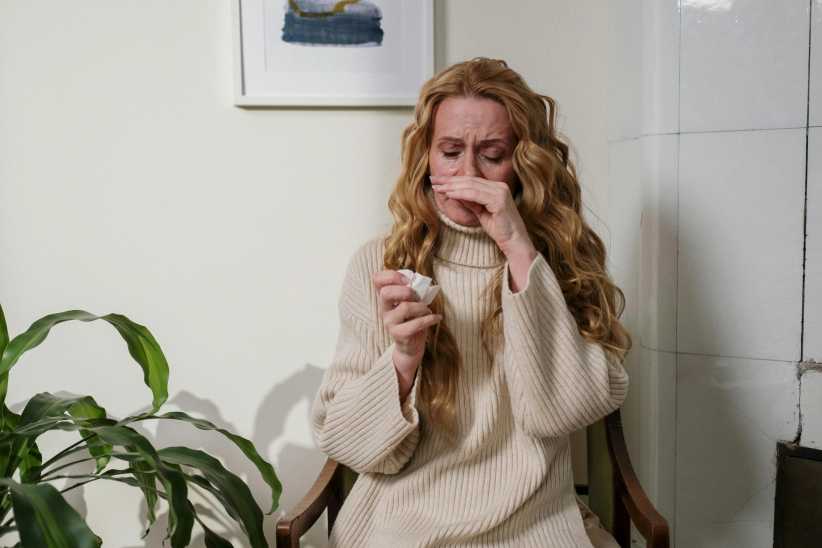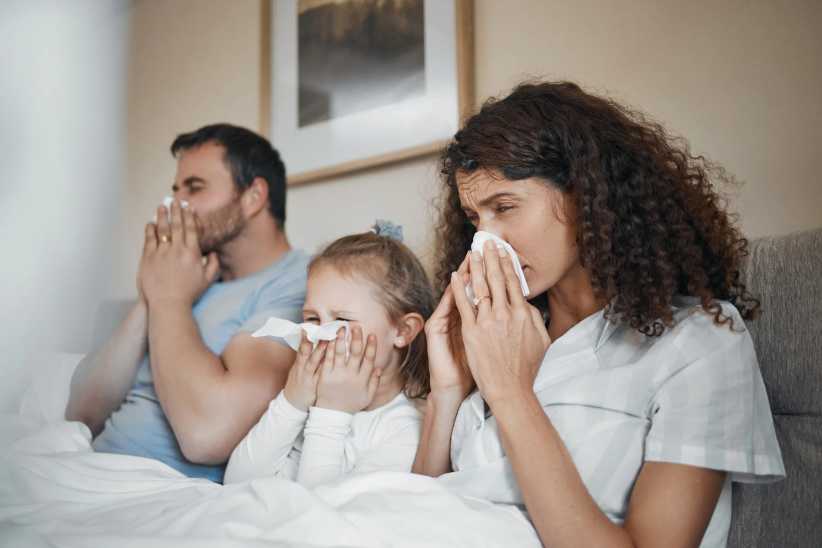Who applies a damp cloth to the forehead during a fever? You? Your mom?
Whenever I was sick with a fever growing up I always felt like I was undertreated by my parents because they never put a cool, damp washcloth on my forehead. This was unbelievable to me at the time. And they wouldn’t let me bundle up in a really warm blanket when I had the chills. They just gave me fever-reducing medicine and had me take a lukewarm bath without much fuss. I was occasionally offered a 7UP.
I was jealous of kids with doting parents who had all sorts of different remedies to get rid of the high temperature. Yet now, after all these years of medical training and practice, I think my mom and dad did A-OK with their fever management. There’s a lot of literature out there suggesting different herbs and other therapies to help bring down a fever, and most of these are harmless. Many have no actual research or evidence to support that they actually work, but they probably don’t hurt either. I had a great time reading all the different suggestions, and after it all I thought that it might be worth thinking about reducing fever itself in more detail.
Lots of people debate what is and isn’t a fever, and that’s its own discussion, but not for this post. For the sake of this discussion, let’s say that we are calling fever a body temperature greater than 38 degrees Celsius, which is 100.4 degrees Fahrenheit.
So let’s review three categories: what helps a fever, what might or might not help, and what definitely doesn’t help bring down a fever, along with a few nuanced details I think are important to know.
Category A – What helps lower a fever:
- Fever-reducing medicines
- Undressing
- Not over-bundling babies
- Cool compresses
- Time
Category B – What might help lower a fever:
- Lukewarm baths
- All those herbal remedies; who knows?
- Hydration
Category C – What won’t help lower a fever:
- Lots of blankets
- Cold baths
- Aspirin (not for children)
- Alcohol baths
Everybody knows about acetaminophen (Tylenol and others, abbreviated “APAP”) and ibuprofen (Advil, Motrin and others, abbreviated “IBU”). These are the mainstays of fever-reducing medicines, and can be used in babies. APAP can be used in children older than 3 months of age and IBU can be used in children older than 6 months. If your less-than-3-month-old has a fever, please call your pediatrician right away for guidance on a game plan that may involve some lab work. Fever in this age group can indicate a serious infection, and we don’t take it lightly. In older children, reducing the fever with these medicines won’t necessarily make the underlying cause of the fever go away faster, but it will make a kid feel more comfortable and do a better job hydrating during the illness. Fluid losses increase during the febrile state, so added hydration on top of what is normal is critical.
Recall that nearly all medicines in children are dosed based on a child’s weight in kilograms, so knowing a relatively accurate weight on your child is important in this scenario.
Read the labels closely because APAP and IBU are dosed differently. And in the spirit of accuracy, use a syringe to measure in cc’s or ml’s, not teaspoons. APAP can be given every 4-6 hours and IBU should be given every 6-8 hours, so there are some potential areas for confusion. There was a time when alternating the two medicines every 4-6 hours was popular (so give APAP, then 4-6 hours later IBU, then 4-6 hours later back to APAP, etc), but many clinicians have given up on this since it became a potential source of harm for some children if the caregiver had trouble keeping it all straight. Now the general consensus is to stick with one medicine at a time so there’s no confusion. One medicine that we are NOT going to use at all is aspirin. Aspirin is a dangerous and toxic medicine for children younger than 18 years old as it is associated with the neurologically devastating Reye’s syndrome. Don’t even. Not one dose.
Bundle Cautiously
That’s really it on the medicines for fever. So what about all the rest of it? As far as clothes and layers and blankets go, a balance needs to be struck between roasting and freezing. In the febrile state, the body’s “set point” is elevated, so the temptation is to add more layers because a person with a fever often feels cold. And everyone thinks that babies need to be bundled up in 25 layers even when they don’t have a fever. But the last thing we want to do is ADD to an already high temperature, so many people do the opposite and remove everything. Then shivering starts, which unfortunately is the body’s natural attempt to raise the temperature as well. So somewhere in between lies the right amount of lightly layered skin covering that will neither cause the child to shiver nor will directly increase the body temperature. This sometimes requires a little experimentation, since everyone is different.
Baths, Washcloths, and Compresses
As with layers, the goal is to cool the body without causing shivering so that the internal temperature set point comes down. Using common sense, this means a cold bath or ice bath is NOT a good idea. Additionally, I’m not aware of a single soul on earth who thinks it’s comfortable, and this whole post is about bringing down a fever to increase comfort, right? avoid the cold baths. A lukewarm bath or compress, however, can help the body cool down without overcooling enough to cause shivering. If a bath sounds perfectly awful to the sick person, using cool (not cold) or lukewarm compresses in the areas where the body typically loses heat can work well. These areas include the head, armpits, groin, and feet.
Giving alcohol baths seems to be a popular folk remedy, and I’m giving it its own short paragraph because I want to be clear that we shouldn’t do this. Not only can alcohol be extremely irritating to the skin, especially sensitive young skin, it can be toxic if ingested so it’s really best to avoid this method as a fever-reducing therapy.
Herbal and Other Remedies
As I mentioned, the most fun part of creating this blog was reading the multitude of available content about how well basil and apple cider vinegar and other substances can help get rid of fever. I couldn’t find any science-based, peer-reviewed evidence to support these compounds, but the words “draw out the fever” and “beneficial medicinal activity” sure were used a lot with no further elaboration of detail.
Several websites extol the virtues of essential oils, like peppermint and ginger, claiming that they help dissipate heat by warming the circulatory system and cause sweating. Not sure about this one, folks. Any sweating helps dissipate heat for sure, but I cannot find any data that shows that essential oils do this directly. A few sources recommended spearmint and eucalyptus oil rubbed on the feet to help “resolve the body’s warmth.” This should definitely help with stinky feet, but not clear if it will reduce fever.
Before my runaway train of snarkiness really leaves the station, I’ll simply say that most of these herbal remedies are harmless if used sparingly. Just don’t get your hopes up that they will definitely work. And, as one of my pharmacy sources pointed out, the concerning component of these herbal remedies is that some of them can have real interactions with therapeutic medicines (like ginger with blood clotting medicines), so please talk to your doctor if you or your child takes daily medicines and you want to try an herbal remedy. Safety first.
I want to close by reminding everyone that it’s important to seek medical care right away if you notice:
- Fever and difficulty breathing
- Fever and mental status changes/sustained behavioral changes
- Fever and rapidly-evolving purple rash
Fever makes many people feel terrible, weak, and tired. Try a few interventions from Category A and definitely the hydration part of Category B, and hopefully you will achieve at least enough fever control to make you or your little one feel a little less terrible during the inevitable illnesses that we all encounter along life’s way.
Keep in touch – let me know what worked for you! Speedy recovery.
Christina Johns, M.D., M.Ed., is the Senior Medical Advisor at PM Pediatrics and author of the blog Dear Dr. Christina. As a parent, pediatrician, and pediatric emergency physician with a master’s in education, she shares her own expertise, plus the wealth of knowledge from our highly skilled staff, with patients and families everywhere.
Follow Dr. Christina online for everyday health tips, insightful articles, and more.
Blog: https://www.pmpediatrics.com/dear-dr-christina/
Facebook: https://www.facebook.com/DrChristinaJohns/
Instagram: https://www.instagram.com/deardrchristina/
Twitter: https://twitter.com/DrCJohns
Pinterest: https://www.pinterest.com/deardrchristina/






















